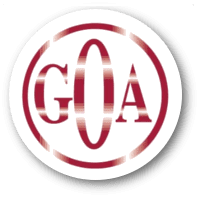The central theme during the presentation on functioning of CGOA in the light of the 50th years of celebration of NAPB
Willemstad, 21 November 2019 – in the framework of the fiftieth anniversary celebration of the union ‘Nederlands-Antilliaanse Politiebond’ (NAPB), the board of NAPB, accompanied by representative of unions of police officers of Aruba, Bonaire and Sint Maarten and of the Confederación Latinoamericana de Trabajadores Estatales (CLATE), on Wednesday 20 November, received a broad and concise explanation on the functioning of CGOA (Centraal Georganiseerd Overleg in Ambtenarenzaken), which is the bipartite consultive body, instituted by law, between government and union representatives of government employees, in which all matters regarding the legal position of government employees of Curaçao are addressed.
The explanation was given by Mr. Raul Henriquez, Director and Secretary-General of the office in charge of amongst other things rendering advice to the body of CGOA. The presentation included a lunch. During the presentation the legal, institutional and financial aspect of CGOA was discussed and the importance of ratification of the covenant C151 of the International Labour organization (ILO), who regulates the labor relations in public administration, was highlighted. This agreement was ratified by Curaçao in 2016. Last year Curaçao submitted its first compliance report with this agreement to the head office of ILO in Geneva, Switzerland. In here, it was concluded that Curaçao generally speaking, complies with this agreement.
Based on questions- and remarks made by/from the guests during the meeting of last Wednesday, it could be concluded that the majority of the countries in Latin America and the Caribbean are not familiar with a similar platform as CGOA. Thus, for many it was an eye-opener, while the police unions of Aruba, Bonaire and Sint Maarten, who were guests of NABP, brought forward that their dialogue with their respective governments take place in a way not to be compared with CGOA. Consequently, they need to make certain adjustments and formalize their bipartite social dialogue with employers in a more effective way.
At the end the attendees exchanged thoughts and emphasized the need to work together in close colaboration in the future not only to learn from each others strong points but also to maintain friendly ties.
On the picture: an impresion of the encounter.

